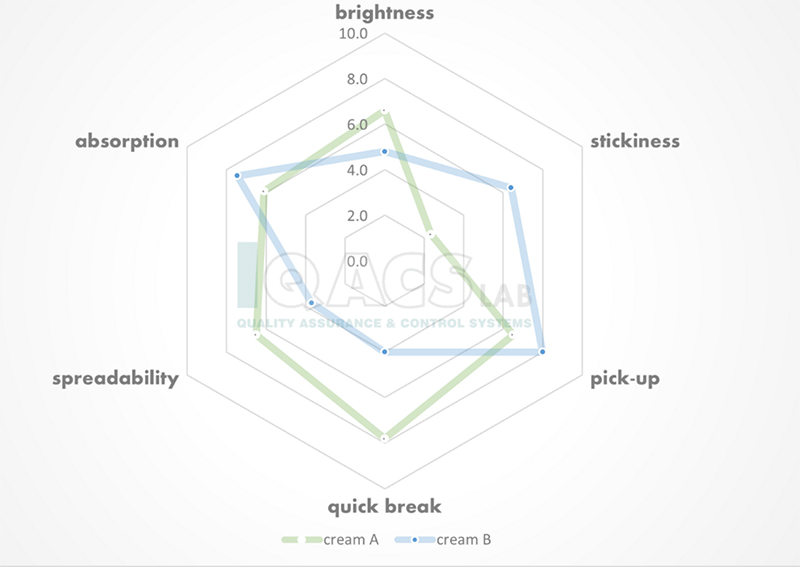What is Sensory evaluation
Sensory evaluation in cosmetology aims to provide professionals in the cosmetics sector with an instrument for measuring the sensations perceived by consumers when using a product intended to be brought into contact with the superficial parts of the body.
Why Sensory evaluation
Sensory evaluation plays a critical role in the cosmetics industry by providing valuable insights into consumer perceptions, preferences, and product performance. It helps cosmetic companies fine-tune product formulations by assessing attributes such as texture, fragrance, colour, and overall sensory experience. This enables the development of products that meet consumer expectations and preferences. Also, understanding sensory preferences allows companies to innovate and create unique product formulations that stand out in the market. By incorporating sensory feedback early in the product development process, companies can create products that resonate with consumers. As a result, companies tailor their products to meet consumer expectations and preferences, ultimately leading to increased customer satisfaction and brand loyalty.
When to perform Sensory evaluation
Performing sensory analysis during Research and Development, proves to be an essential tool for developing formulas (texture, fragrance, appearance, etc.) and for the validating new raw materials that have been formulated. For quality control, sensory evaluation makes it possible to monitor the quality of a product over time, to identify the presence of defects and define standards. For marketing teams, it is a tool for comparison and decision-making regarding products competitors and consumer expectations.
Why QACS
Focused on vision, smell and touch, sensory testing of cosmetic products can investigate sensorial properties in relation to their consumer liking and sensory profile (colour, smell, rheological properties). QACS shares:
"In QACS Lab:
- we offer documented results of sensory analysis, based on integrity and impartiality.
- our testing booths are designed according to ISO 8589:2007 and we use special sensory software for data collection and statistical analysis.
- we pay close attention to selection and implementation of the appropriate sensory methods and inclusion criteria of panelists to the studies.
A particularly useful tool for the sensory evaluation of cosmetics is the descriptive analysis method or known as Profiling. It includes the detection and quantification of the sensory attributes by expert sensory panelists. The attributes are scored with objective criteria and the results are presented in diagrams, such as spider plots.

By harnessing the power of both descriptive analysis and real-life consumer evaluation, our comprehensive approach ensures that your cosmetic products not only meet objective sensory standards but also resonate deeply with your target audience. This synergy enhances the accuracy of marketing claims, paving the way for a successful product launch and sustained consumer satisfaction.
QACS Lab further supports cosmetic sensory testing with clinical efficacy studies and medical supervision if necessary.
Visit our site for more www.qacslab.com"

